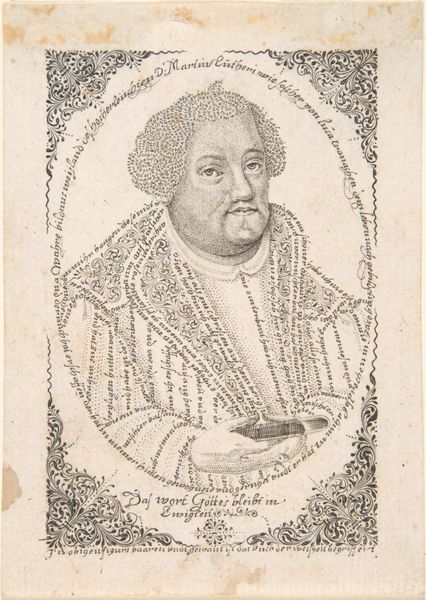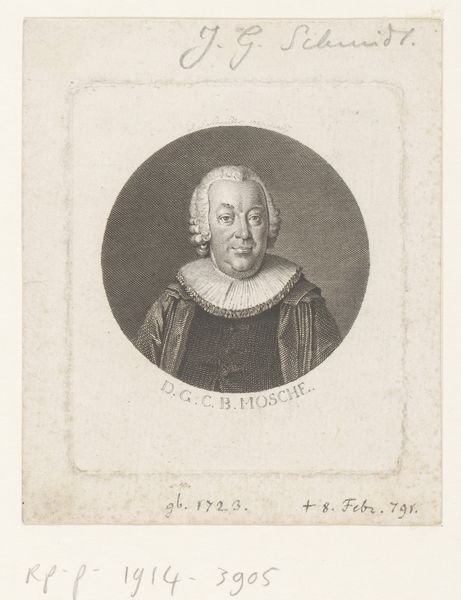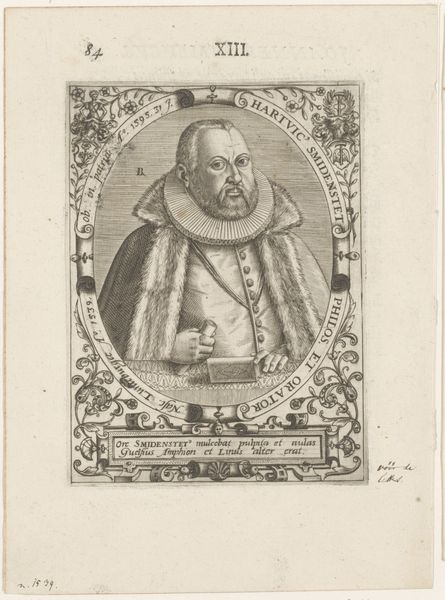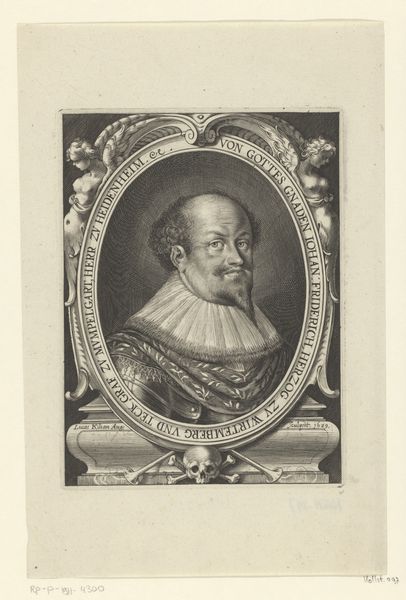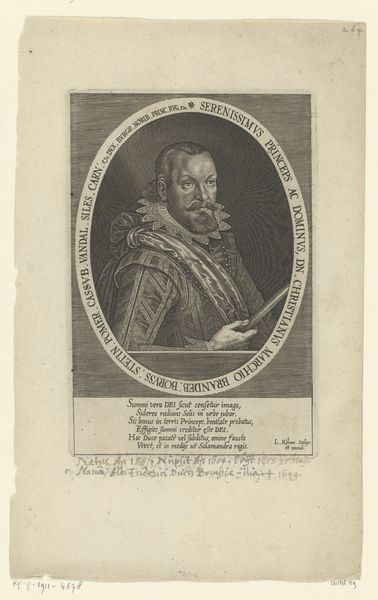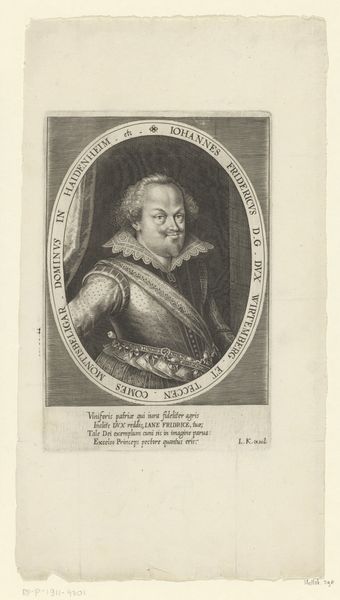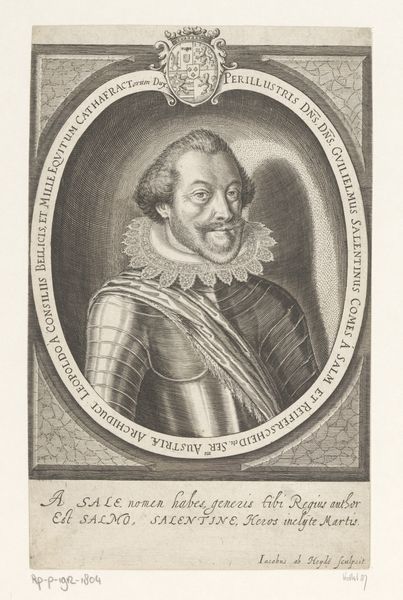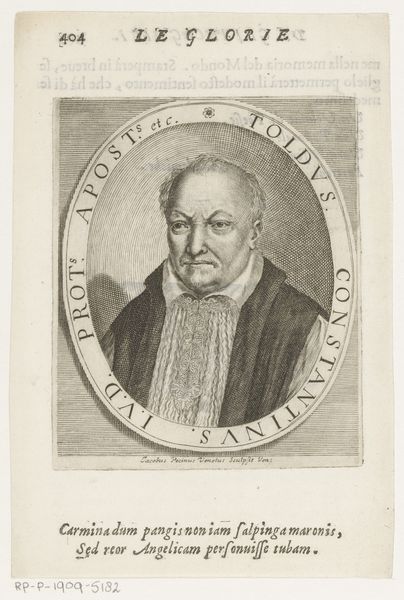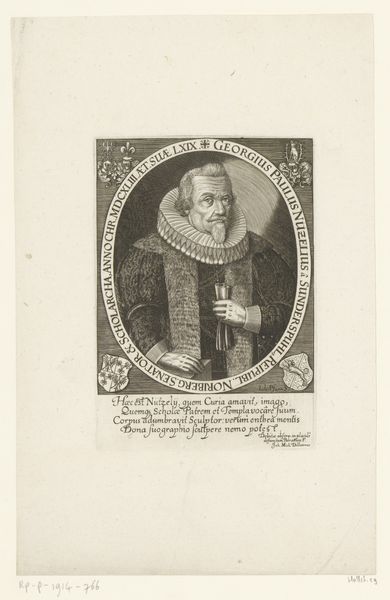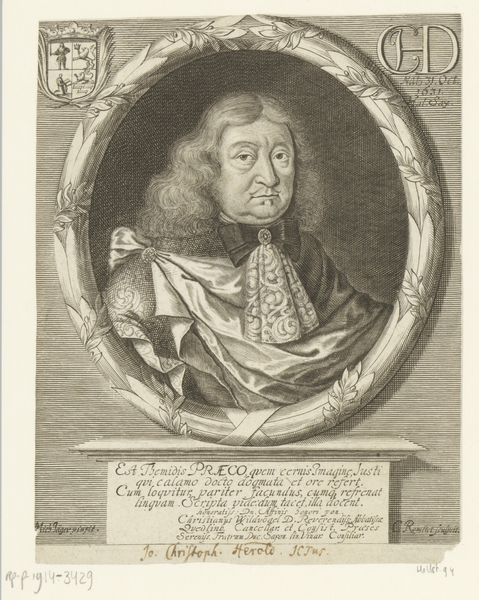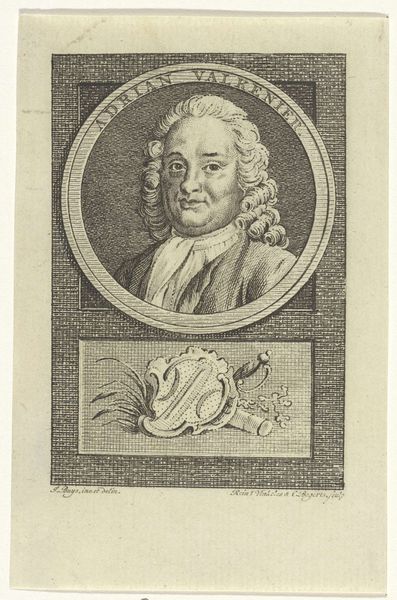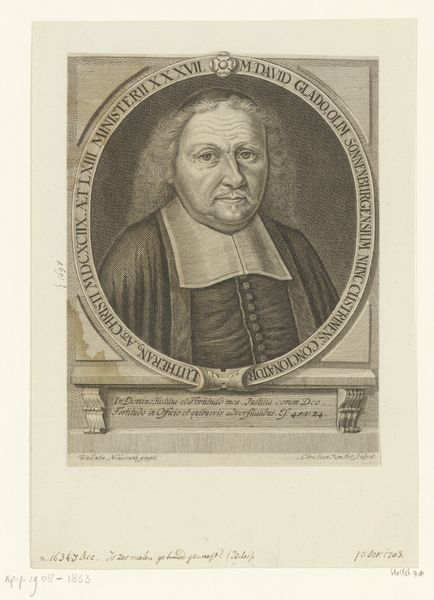
drawing, print, paper, engraving
#
portrait
#
drawing
# print
#
paper
#
history-painting
#
northern-renaissance
#
engraving
Dimensions: 85 × 55 mm (plate); 106 × 90 mm (sheet)
Copyright: Public Domain
Curator: This portrait, entitled "Martin Luther," comes to us from Johann Michael Püchler and resides here at the Art Institute of Chicago. It’s crafted as an engraving, a print on paper, placing it firmly in the tradition of the Northern Renaissance. My initial reaction is one of curiosity. It's a relatively small work, but the density of detail is quite striking, isn't it? Editor: Indeed. Look at how the textures vary! The smooth, almost doughy face contrasts sharply with the elaborate curls and the busy patterns adorning his garments. But beyond mere technique, what do you find most compelling about this piece considering the sociopolitical landscape? Curator: It is impossible to see a portrait of Martin Luther and not think of the Reformation, of course. The radical impact Luther's writings had on Christianity and European power structures makes this image politically charged even today. Consider the text inscribed on his clothing, weaving his very words into the fabric of his being— it serves to emphasize that his body, as much as his printed works, became a site of ideological battle. Editor: Very insightful. It also strikes me how Püchler’s deliberate choices underscore Luther’s presence. See how the ornamental frame is itself inscribed with text, which functions to center him. Note also that although the image plane is limited, the tonal range Püchler creates amplifies a sense of Luther’s solidity, literally grounding his likeness to confront his skeptics, making his representation monumental and almost tangible. Curator: Exactly. That grounding is key. Luther's challenge to papal authority arose not in a vacuum, but from the unique conditions within the Holy Roman Empire and the lived experiences of those who felt disempowered by the Catholic Church. To look at this portrait then, is to consider agency. Luther is portrayed not as simply an individual but rather a nexus point for the intersection of theological arguments, burgeoning humanist philosophies, and deep-seated grievances. He offered new possibilities, and the Protestant Reformation reshaped societal relations across all of Europe. Editor: Agreed. Studying the engraving gives a heightened sense of not just who Luther was, but *how* he became so widely known, influential, and in many eyes, so defiant. Thinking about his image, its reproduction, and circulation in the history of print media and, later, mass media… It brings the subject, and this image of the subject, even more compelling. Curator: Indeed. Thinking through those avenues helps us to really dig deeper. Thank you for that insightful look. Editor: My pleasure, the opportunity to delve into those nuances with you has given me new lenses through which to think about Püchler's decisions and impact.
Comments
No comments
Be the first to comment and join the conversation on the ultimate creative platform.
